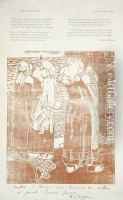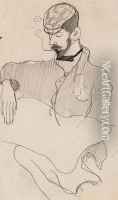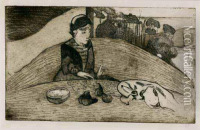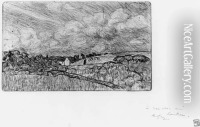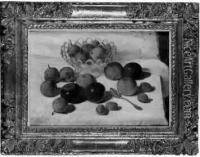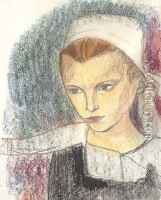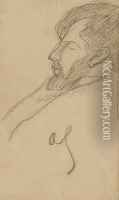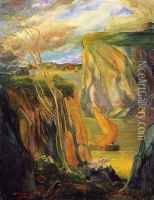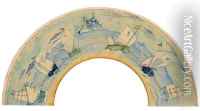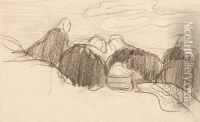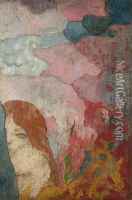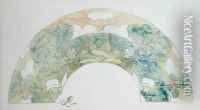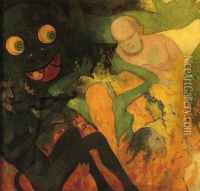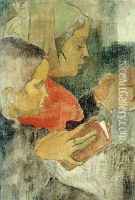Armand Seguin Paintings
Armand Seguin was a French post-Impressionist painter and printmaker, best known for his association with the group of artists known as the Pont-Aven School. Born on April 15, 1869, in Paris, France, he came from a well-to-do family, which allowed him the luxury to pursue his interests in art. Seguin was initially educated in sciences, but his passion for art led him to abandon his studies and devote himself fully to painting.
Seguin's early works were influenced by the Impressionists, but he soon became fascinated with the Synthetist style, which was characterized by the use of flat areas of color and bold outlines, as advocated by Paul Gauguin. He moved to Brittany, where he became a central figure in the Pont-Aven School. There, he worked closely with other artists like Émile Bernard and Paul Sérusier, who were also exploring new approaches to representation, emphasizing symbolism and the use of pure color.
Although Seguin's career was brief, he made significant contributions to the development of modern art. His experiments with etching and woodcut techniques were particularly noteworthy. Seguin's printmaking was innovative in its simplification of forms and its use of non-traditional printmaking materials. He created a series of remarkable prints that captured the essence of the Breton landscape and its inhabitants, and his work in this medium is considered among the precursors to the abstract styles that would emerge in the early 20th century.
Tragically, Seguin's life was cut short by tuberculosis. He died on October 13, 1903, at the age of 34, in the French town of Saint-Maurice. Despite his early death, Seguin's work had a lasting impact on the art world. His bold experiments with color and form continued to influence artists long after his demise, and today his works are held in various museum collections around the world, where they continue to be studied and admired.
